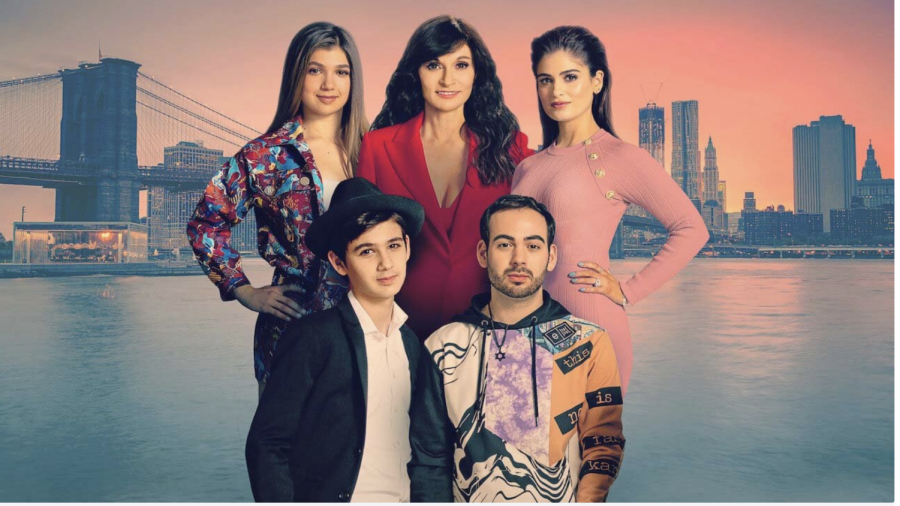My Unorthodox Life Promotes Independence
Only a few years after Julia Haart, the main character in the new Netflix show, My Unorthodox Life, left her restrictive Jewish ultra-orthodox community, she built an international fashion empire. Before Haart’s ascent, her whole life revolved around meeting the needs of her husband, the head of the household. Being a simple housewife, her only responsibility, according to the beliefs of the ultra-orthodox, was to procreate. In her community located in Monsey, New York, Haart had to cover her knees, collarbone, shoulders, hair, and any other body part that could be deemed inappropriate, so no male other than her husband would find her attractive. All of these ancient biblical restrictions took away Haart’s freedom to be a thriving individual.
Haart, depressed and frustrated with her life in Monsey, felt she had no rights as a bright self-sufficient woman, and she wanted to change that. She lived in a fundamentalist society, meaning her religion strictly revolved around the bible. Women had no contact with the outside world, no way of earning a living, and more importantly, they were not allowed an education. Because of this, Haart decided to leave most of her Jewish beliefs in Monsey and start a new life in Manhattan. After breaking off her marriage, Haart brought three out of her four children, one of whom was wed only two days before, to a new chapter of their lives. The second youngest child, Miriam, encouraged the move because she disliked that she couldn’t express herself by playing sports or getting a proper education. Since women weren’t allowed jobs, Haart started a secret insurance company before they moved so that she could pay for her family’s new change.
Haart has always had an eye for fashion. Since she was sixteen, she always wanted to pursue her fashion career, but knew she would never have the freedom to. A few months after the Haart family moved, without any fashion experience, Haart created a very successful luxury shoe brand that revolved around looking stylish while still being comfortable. She wanted her customers to be comfortable within themselves and confident by showing their femininity, something Haart never could express before. Soon after, Haart married Silvio Scagila, an entrepreneur. He made her chief and executive of Elite World Group, a talent media modeling agency, and clothing brand. Haart’s goal is for women to express themselves freely in ways they feel comfortable.
One thing I enjoyed most about the show was the setting. From the luxurious Haart apartment in Tribeca, to their extravagant home in The Hamptons, and the elegant Elite World Group’s office, we got a glimpse into the glamorous lives of the Haart family. In many episodes they show Julia’s closet. This space is similar to Barbie Dream House closet. There are floor to ceiling shelves just for her bags. There are circular racks that come out of the wall and with just a push of a button. Those racks hold her clothes that can spin so Julia doesn’t have to move a muscle to choose her outfit. In a different area she has the same thing for her shoes. This scene made me want to keep watching their extraordinary life.
In this show, a dominant idea was women empowerment. This idea was greatly encouraged by Haart all throughout the show. She would always tell her daughters and female women in her life to always stand up for what they believe in. When one of Haart’s models told her a story when a man took advantage of her when she was working, she did everything in her power to help this model stand up for herself. Haart has felt an insufficient amount of women’s rights in her life, so her goal for her company is to make all women feel comfortable when modeling.
Personally, I liked this show when Haart would show how she ran her business and where she went because of her business successes. I am very interested in entrepreneurship. Seeing a woman run a strong business was powerful. Haart designing clothes for her fashion show and traveling to different designer shows was inspiring. In the middle of the season she took her family to Paris for fashion week. To see all the various brands’ beautiful clothes and how these designers expressed themselves was engaging for me. It felt like I too was with Julia Haart watching in the first row of the Saint Laurent and Givenchy shows. This experience was very amusing to watch just from my bedroom all the way across the world from where these shows took place.
Sophomore Sharmel Gibson explains how this show has impacted her. She says “It gave me an education on extreme religions. It was very inspirational to watch Julia’s story seeing the different oppressive systems she overcame. I also enjoyed the storyline of the Haart children finding their true selves out in the real world.”
Sharmel, along with many young independent women around the world who watched this show, feel a new and stronger sense of women empowerment and individuality.
This show teaches all viewers that no matter what gender or where you are in your path, you and only you can choose how you want to live your life. There are many orthodox women who feel the same way Julia Haart felt, and this show might motivate them to change their lives and stand up for themselves.

Hi! I am Jane Heller, and I am Editor in Chief this year. This is my fourth year on staff. I decided to join writing for publication because I wanted more...







